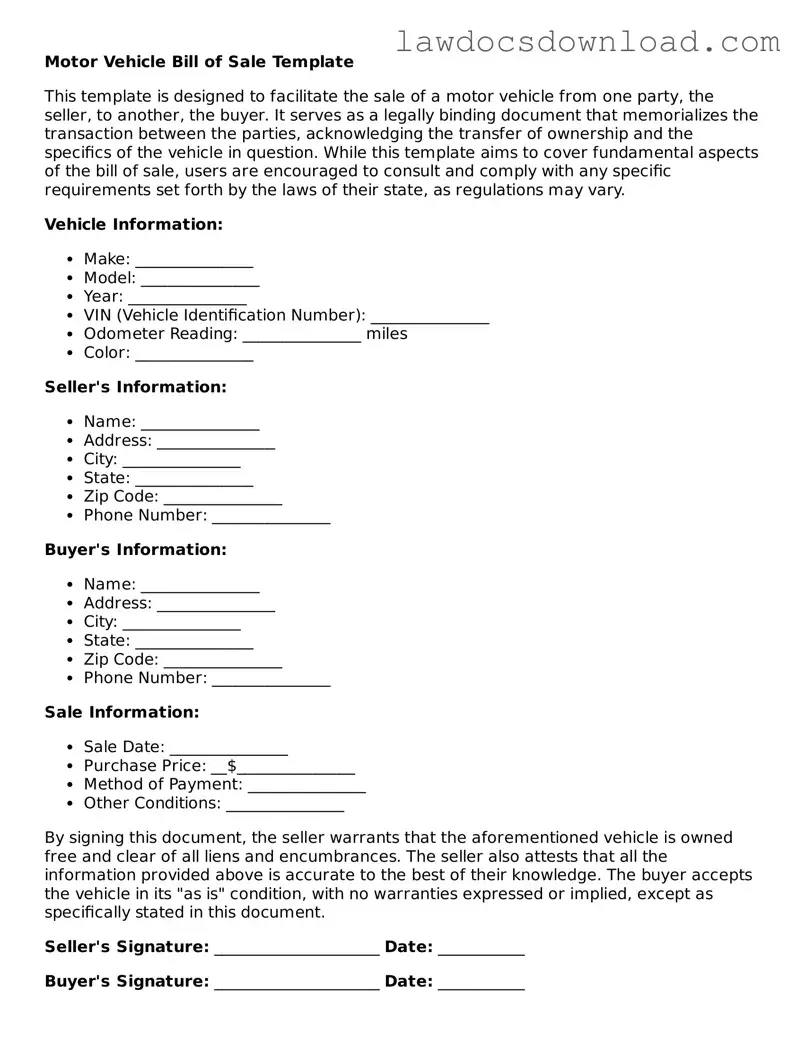The Motor Vehicle Bill of Sale form is closely aligned with the Vessel Bill of Sale. Both documents essentially function as receipts for a transaction. Specifically, the Vessel Bill of Sale is used when buying or selling a boat. Like the Motor Vehicle Bill of Sale, it provides a written record of the transaction, including details like the purchase price and a description of the vessel, ensuring both buyer and seller agree to the terms.
Similarly, the Aircraft Bill of Sale serves a purpose much like the Motor Vehicle Bill of Sale, but for airplane transactions. It records the sale of an aircraft from one party to the other, detailing information such as the make, model, and serial number of the airplane, as well as the particulars of the buyer and seller. This document is essential for the legal transfer of ownership of the aircraft.
A Real Estate Bill of Sale is another document that mirrors the structure and purpose of the Motor Vehicle Bill of Sale. Although it applies to transactions involving property, such as homes or land, it contains similar elements: a clear description of the property being sold, the agreed-upon price, and the details of the buyer and seller. This document confirms the agreement between the parties involved in the real estate transaction.
The Equipment Bill of Sale is used in situations where large pieces of machinery or equipment change hands. Like the Motor Vehicle Bill of Sale, it outlines the specifics of the transaction, including a description of the equipment, the sale price, and the identifying information of the parties involved. It serves as a formal agreement that the item has been sold and ownership has been transferred.
The Business Bill of Sale is for transactions involving the sale of an entire business or a part thereof. This document shares similarities with the Motor Vehicle Bill of Sale, such as detailing the assets included in the sale, the purchase price, and the identities of the buyer and seller. It is a critical document that officially records the sale and transfer of business assets.
The Firearms Bill of Sale is akin to the Motor Vehicle Bill of Sale but for the sale of guns. It contains detailed descriptions of the firearm, including make, model, and serial number, as well as the personal details of the buyer and seller. This document also typically includes certifications regarding the legal status of the buyer's ability to purchase a firearm, reflecting the legal complexities involved in such transactions.
Last but not least, the General Bill of Sale is a more versatile document that can be used for a wide range of personal property transactions, from jewelry to electronics. Like the Motor Vehicle Bill of Sale, it provides a record of the sale, including descriptions of the items, the sale price, and the parties' details. Its flexibility makes it a valuable document for various non-specific personal property sales.
